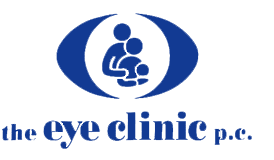If You’re Over 40, Chances are You Have Presbyopia
- Posted on: Aug 15 2019
- Leave a response

And, for most people when they pass the big 40th birthday, usually presbyopia.
Presbyopia is a natural consequence of the aging of your eyes. Presbyopia is not a disease; it is the loss of the eye’s ability to change its focus in able to see objects that are near. You can’t run as fast as you did when you were 20. Now you can’t see as well. It generally starts to appear at the age of 40 in most people.
When young, the lenses in your eyes are soft and flexible. They change shape easily, which is how you focus on objects both up close and far away. But, after you turn 40, those same lenses become less flexible, more rigid (your children would say, “Like your viewpoints!”). They can’t change shape as easily as they did in your younger days, so it becomes much more difficult to see things at close range, such as when reading. Just about everyone develops presbyopia.
Presbyopia is often confused with farsightedness (hyperopia), but the two are different conditions. When the lens of the eye loses flexibility with age, that is presbyopia. When the natural shape of the eyeball (the eye is shorter than normal or has a cornea that is too flat) causes light rays to bend incorrectly once they enter the eye, that’s hyperopia. The results of the two conditions are similar — inability to see up close without correction — but hyperopia can be present at birth, while presbyopia is caused by age. Plus, hyperopia often has genetic tendencies, while presbyopia is common throughout the population.
If you’re over 40 you already know the symptoms. When reading a menu, you need to hold it away at arm’s length. If you do close work, such as reading or computer work, you get headaches or eyestrain.
Presbyopia cannot be cured, but it can be easily corrected. Most people simply opt for standard drugstore reading glasses, having a few pairs around the house wherever they may need to do some reading. You can also opt for bifocals, even conductive keratoplasty.
Newer intraocular lenses, called multifocal IOLs, can correct for presbyopia in addition to replacing the cataract-clouded natural lens. This can completely remove the need for any type of glasses for many people.
You’re not alone in having trouble adding up your scorecard after a round of golf, unless you have your readers in your golf bag. It’s just presbyopia, and it’s just a part of aging.
Is it time for your next eye exam? Call the team at The Eye Clinic, (503) 297-4718 to schedule your appointment.
Posted in: Eye Conditions

